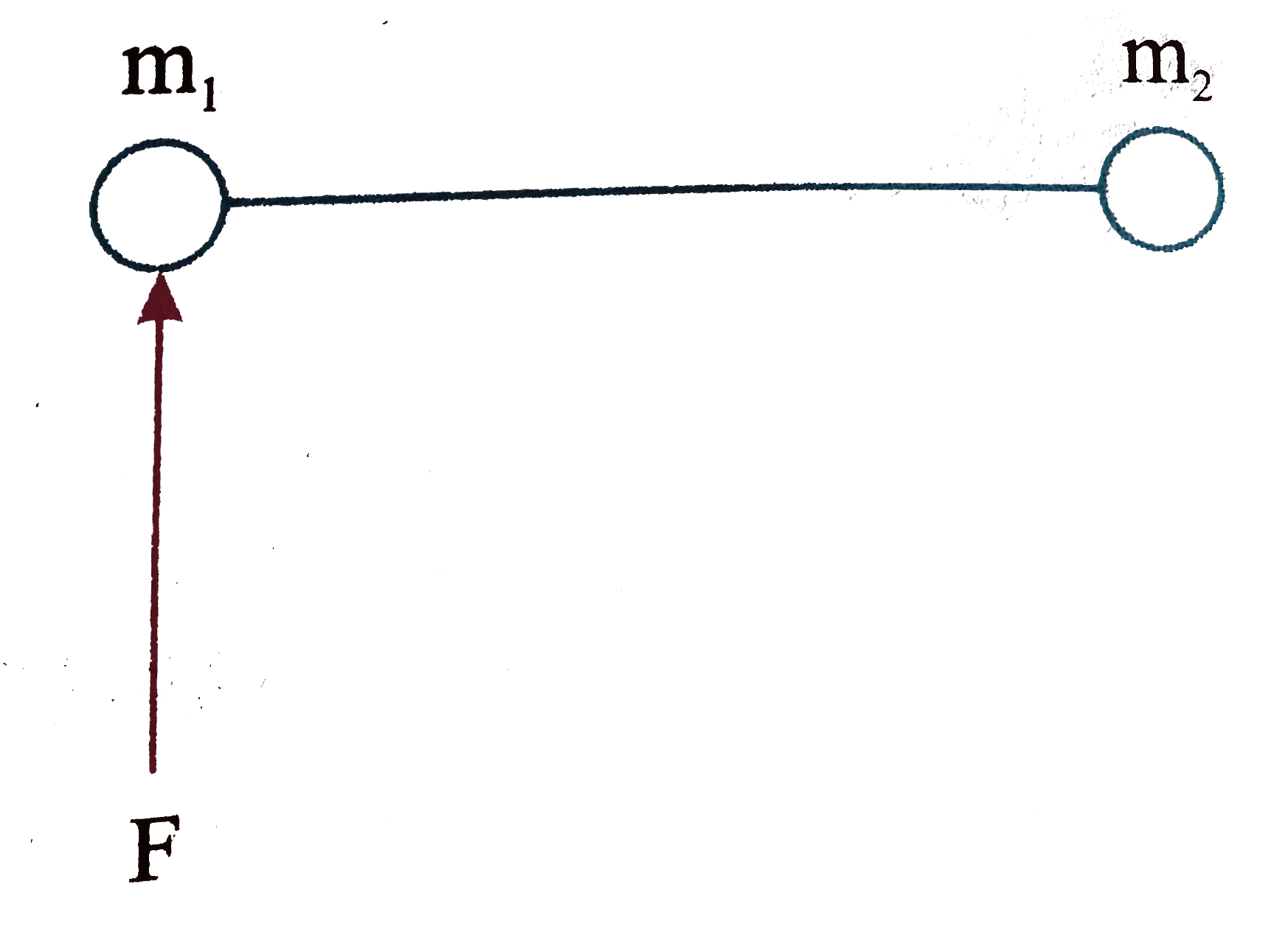The equation of the resulting oscillation obtained by the summation at two mutually perpendicular oscillation with the same frequency f1=f2=5Hz and same initial phase δ1=δ2=60∘ is (Given their amplitude are A1=0.1mandA2=0.05m
0.15sin(10πt+π6)
0.05sin(10πt+2π3)
0.112sin(10πt+π3)
0.313sin(10πt+π2)
The correct Answer is:C
When x=A1sin(ωt+ϕ1)
and y=A2sin(ωt+ϕ2) then
x2A21+y2A22−2xyA1A2cosδ=sin2δ
Here phase i.e. δ=0
∴x2A21+y2A22−2xyA1A2=0
⇒(xA1−yA2)2=0⇒y=A2A1x
REsulting amplitude is
A=√A21+A22=√(0.1)2+(0.05)2=0.112m
Thus the equation of resulting SHM
r=0.112sin(10πt+π3)
Topper's Solved these Questions
- BOOK - A2ZCHAPTER - OSCILLATION AND SIMPLE HARMONIC MOTIONEXERCISE - Problems Based On Mixed Concepts24videos
OSCILLATION AND SIMPLE HARMONIC MOTION
- BOOK - A2ZCHAPTER - OSCILLATION AND SIMPLE HARMONIC MOTIONEXERCISE - Assertion Reasoning22videos
OSCILLATION AND SIMPLE HARMONIC MOTION
- BOOK - A2ZCHAPTER - OSCILLATION AND SIMPLE HARMONIC MOTIONEXERCISE - Simple Pendulum And Different Cases Of Shm25videos
OSCILLATION AND SIMPLE HARMONIC MOTION
- BOOK - A2ZCHAPTER - NEWTONS LAWS OF MOTIONEXERCISE - Chapter Test30videos
NEWTONS LAWS OF MOTION
- BOOK - A2ZCHAPTER - PROPERTIES OF MATTEREXERCISE - Chapter Test29videos
PROPERTIES OF MATTER
Similar Questions
Write amplitude of resultant wave produced by the superposition of two waves of the same frequency and amplitude a1 and a2 when phase difference between them π.
View SolutionTwo sources S1 and S2 separated 2.0 m, vibrate according to equation y1=0.03sinπt and y2=0.02sinπt where y1,y2 and t are in M.K.S unit. They send out waves of velocity 1.5 m/s. Calculate the amplitude of the resultant motion of the particle co-linear with S1 and S2 and located at a point to the left of S1.
View Solution
Knowledge Check
- Question 1 - Select One
The frequency of oscillation of amass m suspended by a spring is v1. If length of spring is cut to one third then the same mass oscillations with frequency v2. Then
Av2=3v1B3v2=v1Cv2=√3v1D√3v2=v1 - Question 2 - Select One
The acceleration of a simple harmonic oscillator is 1m/s2 when its displacement from mean position is 0.5 m. Then its frequency of oscillation is
A√2πHzBπ/√2HzC1√2πHzD√2πHz - Question 3 - Select One or More
Two strings made of same material, same cross-section but different lengths are fixed at both ends and excited in their respective fundamental modes such that total oscillation modes such that total oscillation energy is the same in both cases. Let f1,f2 be the oscillation frequencies and A1,A2 be the amplitudes of oscillation of the antinodes in the two cases. Assuming both strings to be under same tension, pick the correct option (s)
 Af1f2=14BA1A2=12Cf1f2=41DA1A2=21
Af1f2=14BA1A2=12Cf1f2=41DA1A2=21
A mass m suspended by a spring, oscillates with frequency f1. The same mass m oscillates with frequency f2 if length of the spring is made one-third. Find the ratio f1/f2.
View SolutionTwo waves of the same frequency have amplitudes 1.60 and 2.20. They interfere at a point where their phase difference is 60.0∘. What is the resultant amplitude?
View SolutionA certain oscillation results from the addition of coherent oscillations of the same direction results from the addition of coherent where k is the number of the oscillation (k=1,2,……….,N),φ is the phase difference between the kth and ~(k−1)th oscillations. Find the amplitude of the resultant oscillation.
View SolutionThe resultant amplitude, when two waves of two waves of same frequency but with amplitudes a1 and a2 superimpose at phase difference of π/2 will be :-
View SolutionTwo particles of masses m1 and m2 are connected with a rigid rod of length l. If a force F acts perpendicular to the rod then (a1&a2 are instantaneous of m1&m2)
 View Solution
View Solution

